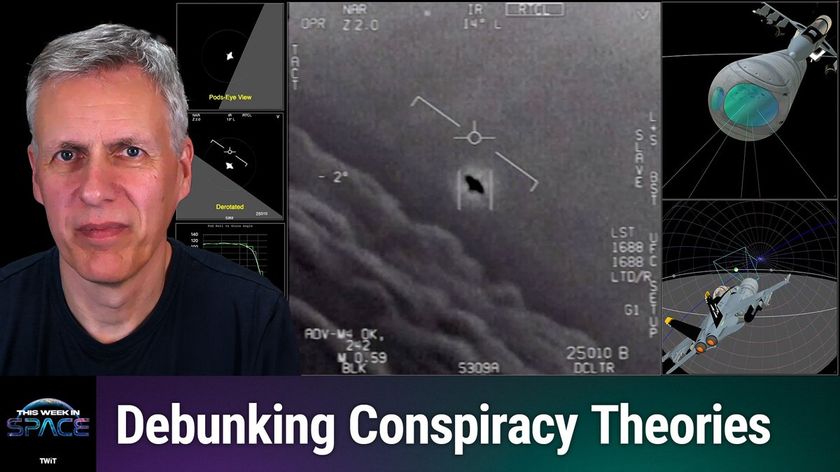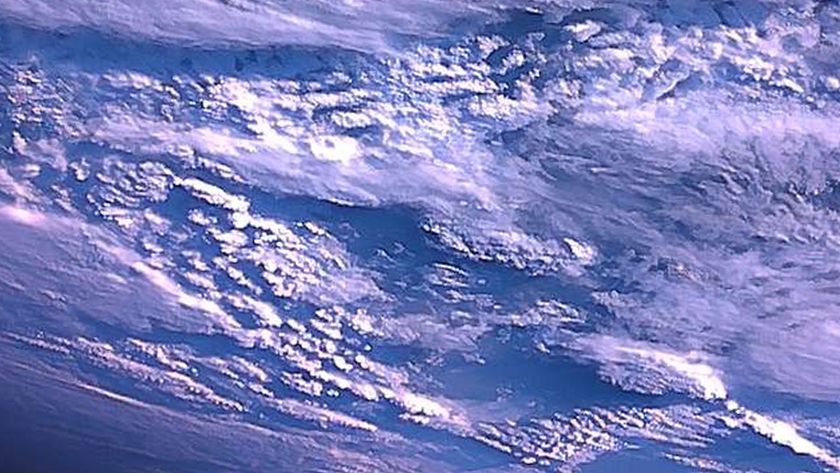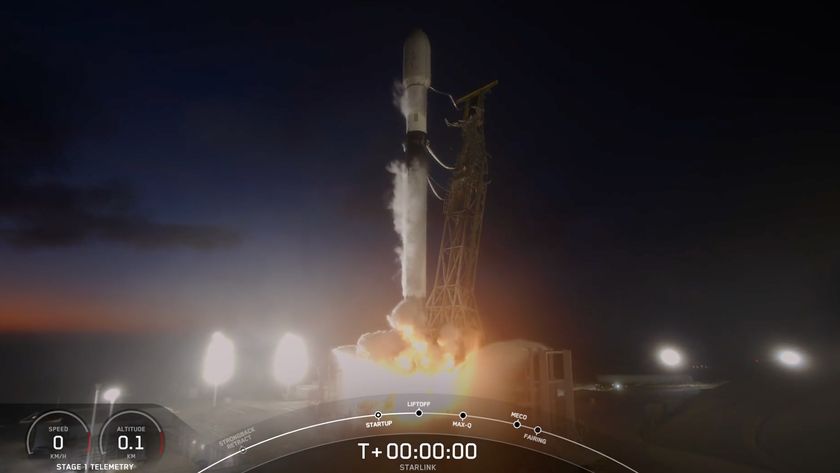Military Hush-Up: Incoming Space Rocks Now Classified
For 15 years, scientists have benefited from data gleaned by U.S. classified satellites of natural fireball events in Earth's atmosphere – but no longer.
A recent U.S. military policy decision now explicitly states that observations by hush-hush government spacecraft of incoming bolides and fireballs are classified secret and are not to be released, SPACE.com has learned.
The satellites' main objectives include detecting nuclear bomb tests, and their characterizations of asteroids and lesser meteoroids as they crash through the atmosphere has been a byproduct data bonanza for scientists.
The upshot: Space rocks that explode in the atmosphere are now classified.
"It's baffling to us why this would suddenly change," said one scientist familiar with the work. "It's unfortunate because there was this great synergy…a very good cooperative arrangement. Systems were put into dual-use mode where a lot of science was getting done that couldn't be done any other way. It's a regrettable change in policy."
Scientists say not only will research into the threat from space be hampered, but public understanding of sometimes dramatic sky explosions will be diminished, perhaps leading to hype and fear of the unknown.
Incoming!
Get the Space.com Newsletter
Breaking space news, the latest updates on rocket launches, skywatching events and more!
Most "shooting stars" are caused by natural space debris no larger than peas. But routinely, rocks as big as basketballs and even small cars crash into the atmosphere. Most vaporize or explode on the way in, but some reach the surface or explode above the surface. Understandably, scientists want to know about these events so they can better predict the risk here on Earth.
Yet because the world is two-thirds ocean, most incoming objects aren't visible to observers on the ground. Many other incoming space rocks go unnoticed because daylight drowns them out.
Over the last decade or so, hundreds of these events have been spotted by the classified satellites. Priceless observational information derived from the spacecraft were made quickly available, giving researchers such insights as time, a location, height above the surface, as well as light-curves to help pin down the amount of energy churned out from the fireballs.
And in the shaky world we now live, it's nice to know that a sky-high detonation is natural versus a nuclear weapon blast.
Where the space-based surveillance truly shines is over remote stretches of ocean – far away from the prospect of ground-based data collection.
But all that ended within the last few months, leaving scientists blind-sided and miffed by the shift in policy. The hope is that the policy decision will be revisited and overturned.
Critical importance
"The fireball data from military or surveillance assets have been of critical importance for assessing the impact hazard," said David Morrison, a Near Earth Object (NEO) scientist at NASA's Ames Research Center. He noted that his views are his own, not as a NASA spokesperson.
The size of the average largest atmospheric impact from small asteroids is a key piece of experimental data to anchor the low-energy end of the power-law distribution of impactors, from asteroids greater than 6 miles (10 kilometers) in diameter down to the meter scale, Morrison told SPACE.com.
"These fireball data together with astronomical observations of larger near-Earth asteroids define the nature of the impact hazard and allow rational planning to deal with this issue," Morrison said.
As example, the fireball data together with infrasound allowed scientists to verify the approximate size and energy of the unique Carancas impact in the Altiplano -- on the Peru-Bolivia border -- on Sept. 15, 2007.
Fireball information also played an important part in the story of the small asteroid 2008 TC3, Morrison said. That was the first-ever case of the astronomical detection of a small asteroid before it hit last year. The fireball data were key for locating the impact point and the subsequent recovery of fragments from this impact.
Link in public understanding
Astronomers are closing in on a years-long effort to find most of the potentially devastating large asteroids in our neck of the cosmic woods, those that could cause widespread regional or global devastation. Now they plan to look for the smaller stuff.
So it is ironic that the availability of these fireball data should be curtailed just at the time the NEO program is moving toward surveying the small impactors that are most likely to be picked up in the fireball monitoring program, Morrision said.
"These data have been available to the scientific community for the past decade," he said. "It is unfortunate this information is shut off just when it is becoming more valuable to the community interested in characterizing near Earth asteroids and protecting our planet from asteroid impacts."
The newly issued policy edict by the U.S. military of reporting fireball observations from satellites also caught the attention of Clark Chapman, a planetary scientist and asteroid impact expert at Southwest Research Institute in Boulder, Colorado.
"I think that this information is very important to make public," Chapman told SPACE.com.
"More important than the scientific value, I think, is that these rare, bright fireballs provide a link in public understanding to the asteroid impact hazard posed by still larger and less frequent asteroids," Chapman explained.
Those objects are witnessed by unsuspecting people in far-flung places, Chapman said, often generating incorrect and exaggerated reports.
"The grounding achieved by associating these reports by untrained observers with the satellite measurements is very useful for calibrating the observer reports and closing the loop with folks who think they have seen something mysterious and extraordinary," Chapman said.
- Small Asteroids Pose Big New Threat
- Top 10: The Greatest Explosions Ever
- Gallery: Earth's Meteor Craters
Leonard David has been reporting on the space industry for more than four decades. He is past editor-in-chief of the National Space Society's Ad Astra and Space World magazines and has written for SPACE.com since 1999.
Join our Space Forums to keep talking space on the latest missions, night sky and more! And if you have a news tip, correction or comment, let us know at: community@space.com.

Leonard David is an award-winning space journalist who has been reporting on space activities for more than 50 years. Currently writing as Space.com's Space Insider Columnist among his other projects, Leonard has authored numerous books on space exploration, Mars missions and more, with his latest being "Moon Rush: The New Space Race" published in 2019 by National Geographic. He also wrote "Mars: Our Future on the Red Planet" released in 2016 by National Geographic. Leonard has served as a correspondent for SpaceNews, Scientific American and Aerospace America for the AIAA. He has received many awards, including the first Ordway Award for Sustained Excellence in Spaceflight History in 2015 at the AAS Wernher von Braun Memorial Symposium. You can find out Leonard's latest project at his website and on Twitter.


